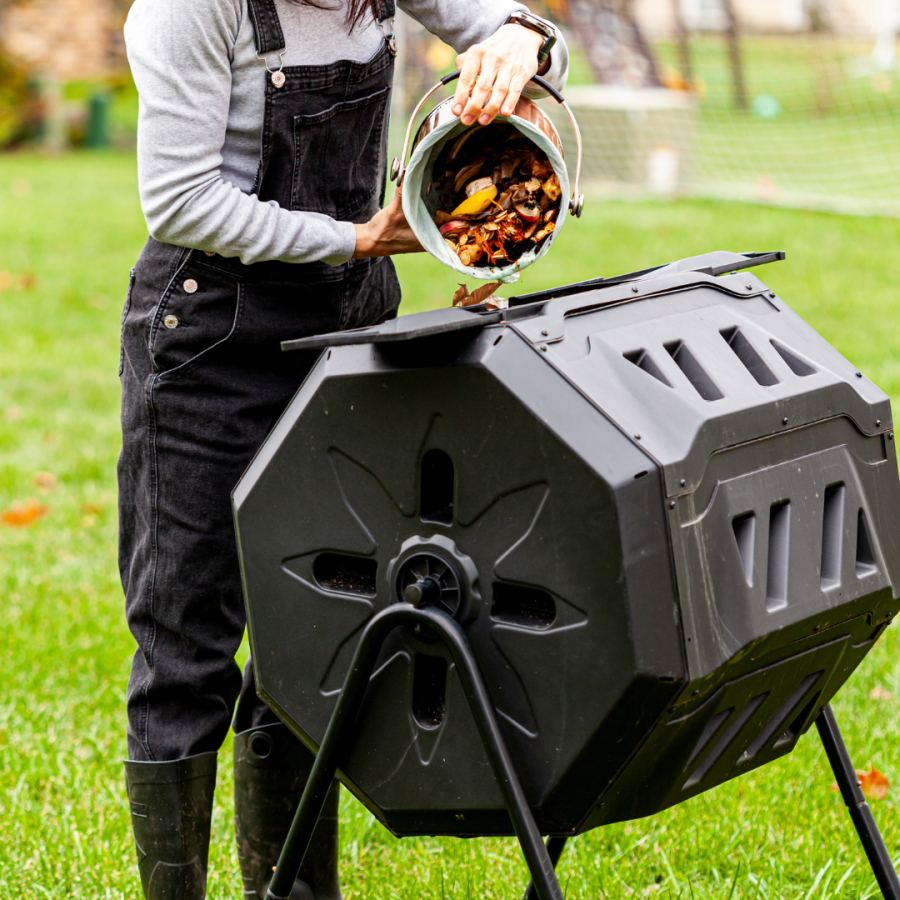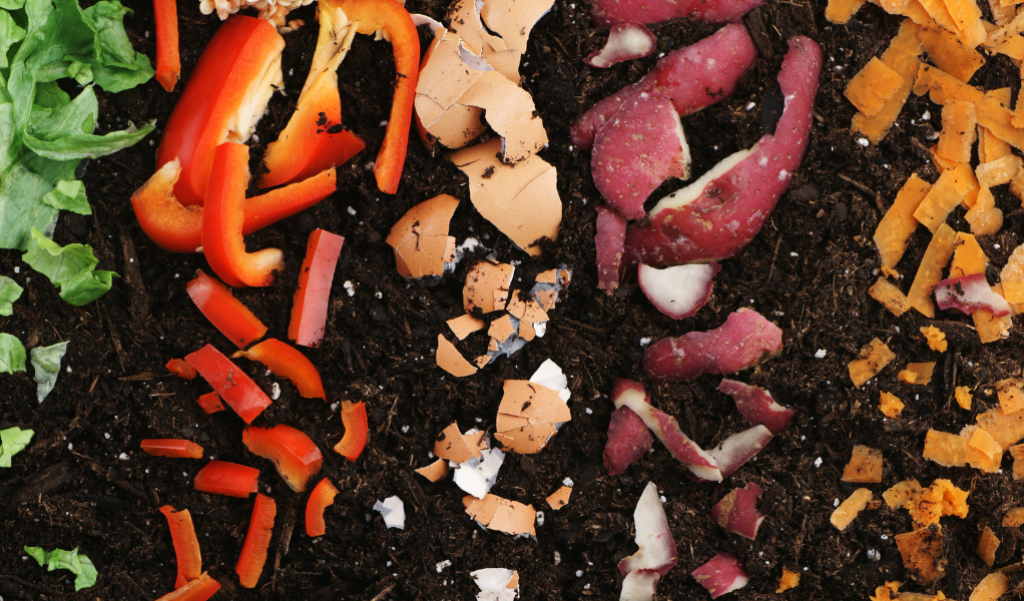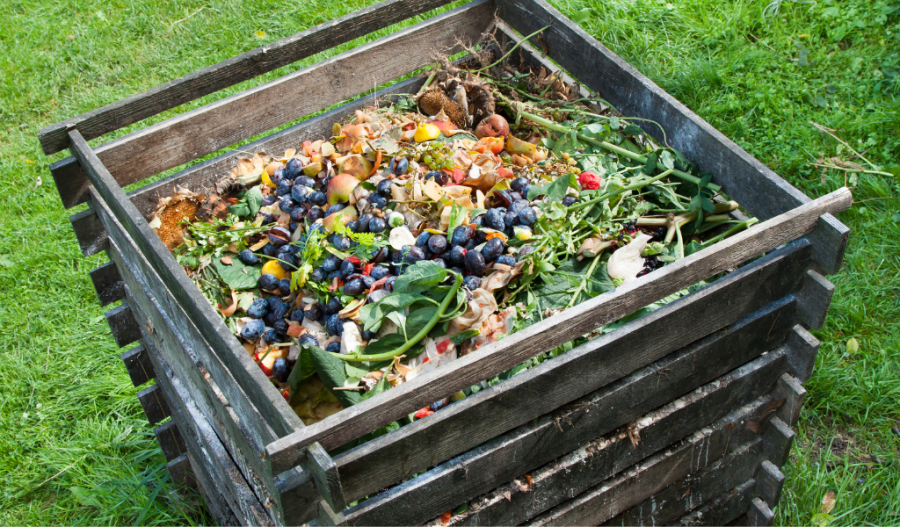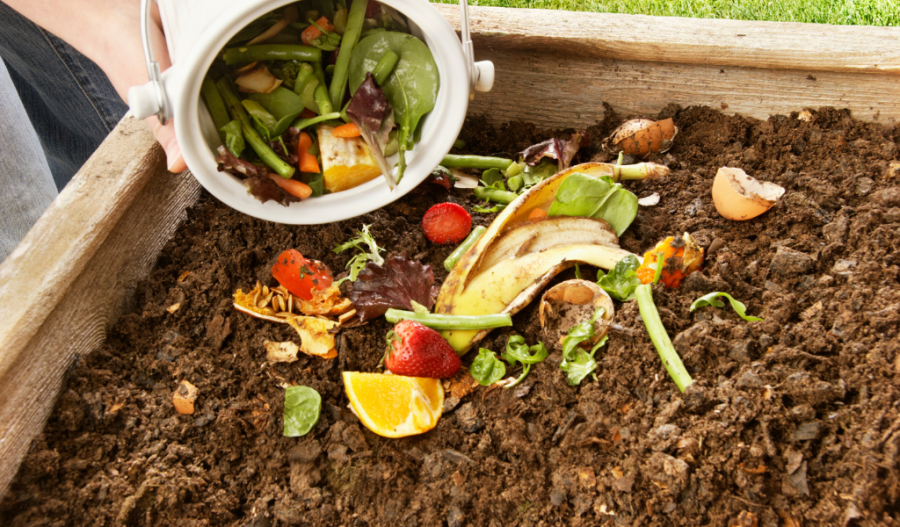
Tumbler
Compost tumblers are a simple way to compost food scraps and yard waste without taking up too much space. Tumblers are generally small, lightweight, and moveable with one to two chambers that are designed to be rotated to aerate the compost. This added aeration means more oxygen can reach the decomposing material, making it one of the quickest ways to achieve finished compost.
Compost tumblers also create a solution called “compost tea” which is the liquid that leaks from the tumbler after it rains or after you add water. You can capture the “tea” by placing a pan or bucket underneath and using it to fertilize your plants!
Bin
Compost bins are typically round- or square-shaped with enclosures on the sides and top, and open on the bottom so the compost has contact with the ground. These bins are generally inexpensive, easy to set up, and require little space. They also have the added benefit of discouraging pests because they are enclosed on all sides. Unfortunately, making compost in a bin may take longer than using a tumbler because they are difficult to turn and aerate.
Pile
Starting a compost pile is probably the simplest method of composting. All you need is a space in your yard! Ideally, your compost pile will be 3 feet by 3 feet so it’s able to reach the minimum temperature needed to process the materials but not so big that it cannot be turned. The best way to build your compost pile is to add material in layers, alternating between “browns” and “greens.” The base of your compost should be a thick layer of browns, like wood chips and twigs, so the pile is properly aerated. You will need to turn your pile every few weeks to ensure it receives enough oxygen to prevent an anaerobic environment and speed up the composting process.
Vermicomposting
Vermicomposting uses earthworms, like redworms, to digest organic material and produce compost. Worm bins are almost always raised off the ground and made of plastic, with holes for ventilation and moisture. Worms require a bed, which can be made from leaves, straw, shredded paper/cardboard, or egg cartons. On top of this layer, you’ll add garden soil and pour in some water.
Next, add worms to the bin. Redworms will eat about half their body weight in waste every day, so measure your food waste daily to know how many worms you should add to your bin. Lastly, add a layer of food scraps! Do not feed your worms any animal products; this includes meat, bones, dairy, or fats. Stick to plant items like fruit and vegetable scraps, coffee grounds, napkins, and paper towels.




